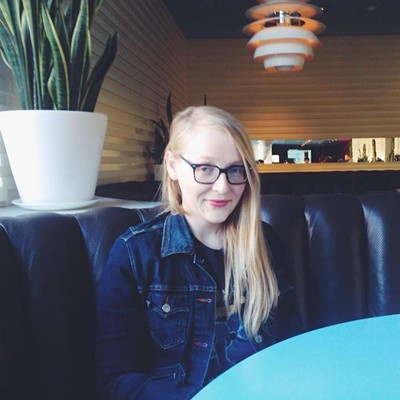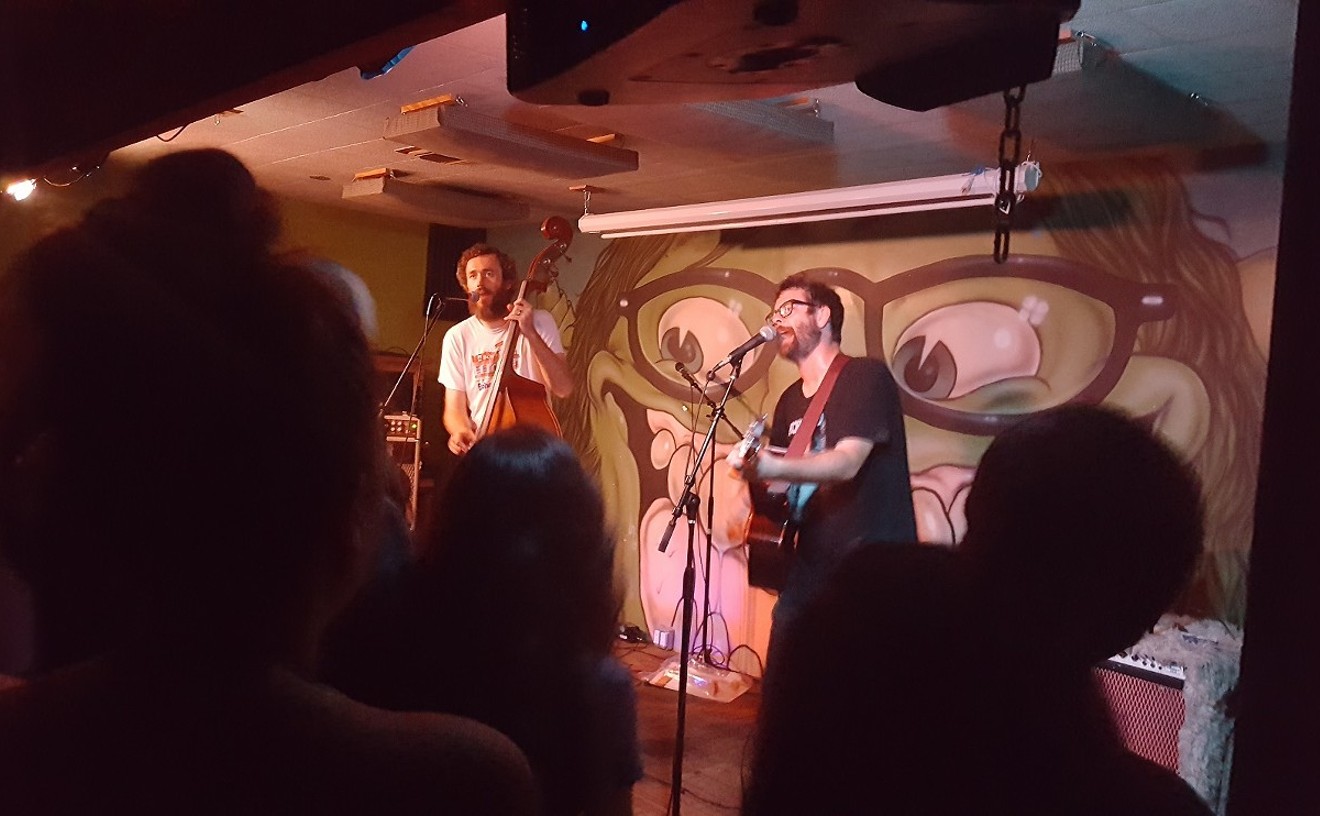While the French word "couture" translates to dressmaking, in the world of fashion it carries a tremendous weight. It's used in reference to haute couture, a small industry comprising long-established fashion houses — think Dior, Lanvin — crafting made-to-measure clothing (often artistically elaborate and not in any way commercially viable) whose processes are strictly overseen by a Parisian regulatory body.
However, the term has been coopted in recent years to mean, essentially, real fancy.
Which seems to be the preferred definition at Phoenix Fashion Week, where more than likely none of the clothing shown was made per technical couture standards.
Cosmogyral opened the first half of the evening, kicking off the final third of the emerging designer competition to be named emerging couture designer of the year. The Los Angeles brand dealt in dreamy, 1920s-influenced boudoir looks in unlined icy lavender. Designer Jenine Nerecina's body inclusiveness (read: some of the models' bodies were representative of the average American woman, who wears a size 16 per a recent study) gave the old-timey collection reminiscent of art deco dressing gowns a decidedly fresh feel. It was a lovely, if underwhelming, start.
Then came Mowa by Emily Smith, a designer from Botswana. She showed a hyper-focused collection of animal print gowns with harness necklines. Well-made and easily marketable, Smith's dresses hearkened back to 2014 emerging designer winner Misha Mendicino, whose elephant-print dresses struck a similarly same-y note.
St. Louis designer Barbara Bultman followed with a Fifth Element aesthetic. Models wore chalky white makeup masked over their eyes, dresses with conflicting hemlines, leather chokers with draping fringe, and overworked crop vests and jackets. A pair of culottes in silk had one of the saddest, most bunching crotches to have come down the runway this year. Despite such execution issues, Bultman's collection earned the crowd's excitement — and the title of emerging couture designer of 2016.
As did designs from Phoenix's Aconav, helmed by Native American designer Loren Aragon and embracing both Acoma Pueblo and Navajo culture through textile. In black, white, and red, Aragon blended strong graphic patterns in shift dresses with sheered-out black necklines. The hyper-graphic looks went slightly off the rails in the final section with a pair of party dresses: one deep sky blue and the other orchid and adorned with butterfly appliqués.
The second half of the evening featured established designers from something of an improv school of design. Yes beading and sparkles and fringe and peplum and tulle.
Two Lebanese brands, Dalida Ayach and Rachad Itani Couture, led the pack. The former dealt in wedding looks — from mother of the bride jumpsuits to what might have been the sparkliest bridal gown ever constructed — and the latter showed enough peplum to create an entirely separate collection constructed solely from those panels of fabric.
Wrapping the presentations and the event were two Phoenix Fashion Week vets: Yas Couture and Rocky Gathercole. Yas showed in 2015, and Gathercole has served up the event's finale for what's now the fourth year in a row.
Last year, Yas' showing wasn't particularly memorable — especially as a lead-up to Gathercole's much-hyped collection. But this year, Kuwaiti designer Elie Madi turned up with diva-ready duds. Standouts included an architectural catsuit that mimicked the structure of a building across the body and a human icicle suit covered in dangling prickly, pearly spines.
But Gathercole has become the token all-out bananas showstopper. For 2016, the Filipino designer reined in his usual visual feast in favor of showing butt cheek-baring bodysuits adorned with showgirl feathers in a rainbow of colors explained as a celebration of LGBT pride, onesies airbrushed with Ed Hardy imagery, and Mardi Gras-inspired masks and headpieces suitable for Heidi Klum levels of Halloween costumery.
Yes, that sounds plenty lavish, but it was the most muted collection the designer has brought to Phoenix Fashion Week, where in years past he's shown floral bathing beauties, spectacularly devilish creatures, and sculpted show wear that's straight out of the Lady Gaga playbook.
The change-up is welcome, sure. But it highlights one of Phoenix Fashion Week's biggest issues. While the event proclaims to be the biggest fashion industry event in the Southwest, its most exciting designers are imported from around the world. Instead of building industry here (and, no, a community night of T-shirt designs does not qualify as building industry), the event seeks international notoriety. There was one designer from Arizona featured on Saturday night. What the rest of them have to do with the Southwest and why some of them return to show here year after year is, frankly, puzzling.
Maybe this is high fashion, but it's not couture. And maybe it's time for Phoenix Fashion Week to reconsider its mission, its purpose, and its name.











